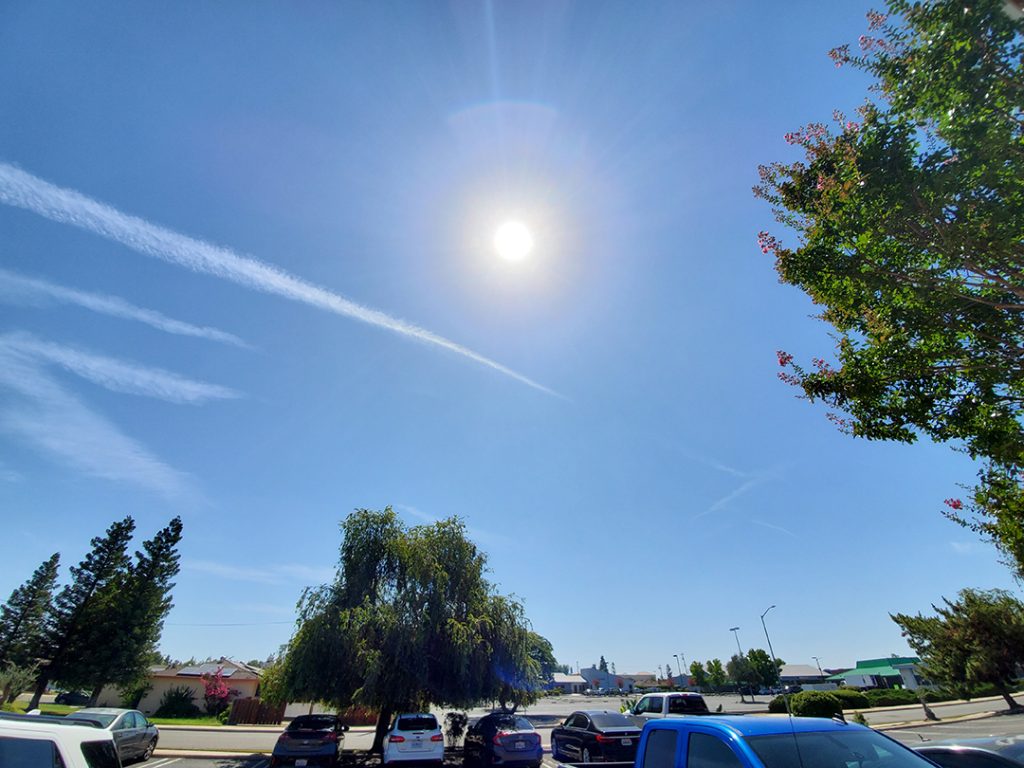
As COVID-19 has forced many businesses and restaurants to move their operations outdoors, another problem has presented itself; heat. With weekend temperatures projected to exceed 100 degrees and Monday’s projected at 104, it would be a good time to stay alert of the dangers of prolonged heat exposure.
Exposure to high temperatures has always presented problems that residents of the Central Valley have contended with, but now with businesses stretching their footprints outside to meet social distancing requirements, the risks of heat exposure are even more prevalent.
“Individuals with prolonged exposure to high temperatures risk heat stroke due to reduced capacity for cooling the body,” Chad Fitzgerald, the Clovis Fire Department’s Life Safety Enforcement Manager said. “As the exposure continues, outdoor temperatures rise and lack of fluid intake occurs, individuals risk unconsciousness and dehydration if they fail to find cooling, reduce their outdoor exposure and take in fluids gradually to cool off.”
Keeping safe in the heat during COVID-19 is very much like keeping safe in the heat during any other summer. Standard practices like staying hydrated and finding shade when possible still apply.
“Drink plenty of water or other non-alcoholic fluids. Your body needs to keep cool and drinking even if you don’t feel thirsty,” Fitzgerald said. Eating fruits and vegetables and avoiding foods high in fat can also be beneficial. Fatty foods can increase body processes that lead to increased water loss.
For businesses looking to keep their employees and customers safe, Fitzgerald recommends that they have plenty of water available, utilize whatever shade may be present and use fans when possible.
“Businesses operating outdoors can consider large misting fans, cloth shading systems and including water at tables to reduce the risk of heat exhaustion for their patrons,” Fitzgerald said.
Members of the population at the highest risk for COVID-19 also tend to be the same groups at a higher risk for heat-related illnesses. Like many in the community have become accustomed to in the time of COVID-19, checking in on at-risk members of your family or friends is also highly encouraged.
“During extreme heat conditions, check twice a day on friends and family members who are elderly, medically fragile or have limited access to adequate cooling,” Fitzgerald said.
Part of the reason for moving businesses outdoors were the risks that are associated with COVID-19 and spending time indoors where particles are less likely to be dispersed.
“Outdoors, air currents are more likely to scatter and dilute the virus, making transmission less likely than in a home, office, or other confined space with limited air circulation,” the Harvard Medical School said on its Coronavirus Resource Center.
While on paper, moving business operations back indoors could be a solution to the heat, that comes with another set of challenges that may be harder to address. The Centers for Disease Control and Prevention considers restaurants with indoor and outdoor seating as a higher risk than those with just outdoor seating.
For now, the CDC encourages restaurants to prioritize outdoor seating when possible. Restaurants should, “offer drive-through, curbside take out, or delivery options as applicable,” and “prioritize outdoor seating as much as possible,” the CDC said on their website.
In the short term, working to negate the potential dangers of prolonged heat exposure could prove to be an easier task than negating the potential dangers that come with COVID-19 and enclosed spaces.
Many businesses like restaurants are offering takeout, a practice originally done to limit the spread of COVID-19, but now can also be a way of keeping out of the heat for an extended period of time.
Other commercial businesses are offering services like curb-side pickup that allow patrons to stay in their cars and out of the heat.
For those wishing to spend time outdoors, the California Department of Public Health has endorsed a number of outdoor physical activities like hiking, tennis and golf that citizens can partake in, providing they socially distance themselves.
It would be best to try and schedule outdoor activity in the mornings and evenings when temperatures are not at their highest, Fitzgerald said. If you plan on bringing your pet with you outdoors, keep tabs on them as well by providing them with fresh water and shade when possible.









